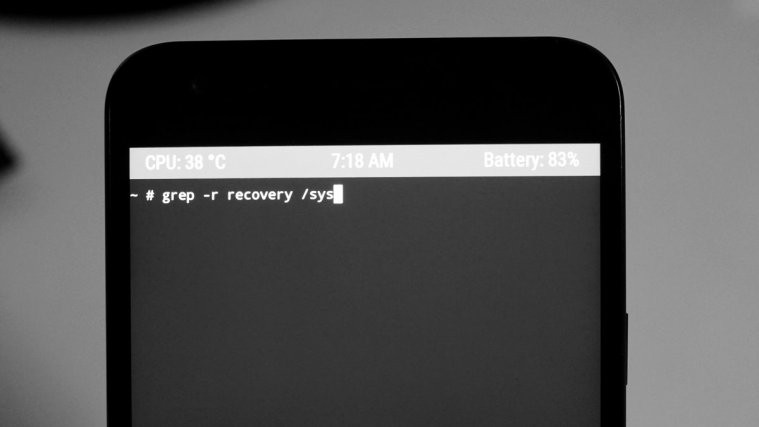We’ve all been there. Soft bricks and bootloop happen when you enter the world of rooting Android devices. Folks who have used Android for years now and have rooted multiple devices would know this.
Bootloop can happen on any device and there are more than a hundred reasons that can trigger a bootloop, but the cause is always an unstable system caused by modifying / altering some of the system files in improper way.
Like flashing a custom kernel not compatible with your firmware may cause a bootloop, OR, even simpler, a custom font or improper permission for any file on the system could cause a bootloop.
Bootloop can be caused by a hundred ways, but there’s really one way to fix a bootloop — flashing stock firmware. Like we said earlier, a bootloop is caused by an unstable system, so what you need to do is fix that unstable system by installing a stable system.
If you’ve a nandroid backup (CWM/TWRP backup) from when your device was working fine and had a stable system, then it’d do just fine to fix the bootloop on the device. However, chances are you may not have it, so in that case flashing a stock firmware of your device is the only choice.
Android is a BIG world with thousands of devices selling in multiple markets around the world, and each device has unique stock system firmware. So it isn’t really possible to keep a database of all these firmwares.
If you happen to own devices from any of the major Android manufacturers though, finding a stock firmware may not prove much of a trouble then.
We’ve done extensive research for the finding the best resources to download stock firmware for Android devices from the following companies: Samsung, Google, Sony, HTC, LG and Motorola. Below are the details:
Flashing a stock firmware is really the only way to fix bootloop on Android devices, so even if it looks challenging to you, know that it’s worth the effort.
RESOURCES FOR INSTALLING STOCK FIRMWARE
Below are some resources for the popular manufacturers/devices to install stock firmware, so that you can fix bootloop on your Android device.
GOOGLE NEXUS DEVICES
Google Nexus devices are one of the easiest to install the stock firmware. Google provides fastboot flashable factory images for all of its Nexus devices and for all Android versions ever released for them. You can get these factory images at the link below, along with a detailed step-by-step flashing instructions:
[icon name=”hand-o-right” class=”” unprefixed_class=””] Nexus devices factory image downloads and installation instructions
SAMSUNG DEVICES
Installing stock firmware on Samsung devices is easy as well. You just have to download an Odin flashable .tar file of stock firmware for your device model number and flash it using Odin.
Below are links to two site that have the largest database of stock firmwares for all Samsung devices. Download firmware for your device model number from these resources and then follow our instructions guide to install the firmware using Odin.
[icon name=”download” class=”” unprefixed_class=””] Firmware download resources: SamMobile | Samsung-Updates
[icon name=”hand-o-right” class=”” unprefixed_class=””] How to Install Stock Firmware using Odin
SONY XPERIA DEVICES
Installing stock firmware on Sony devices is easier too. A custom tool called FlashTool is available for Sony Xperia devices that lets you flash stock Xperia firmwares that come as a .ftf file. Plus, there’s a nice tool called XperiFirm to find and download .ftf firmware for Sony Xperia device. Below are links to both the tools:
[icon name=”download” class=”” unprefixed_class=””] Download XperiFirm
[icon name=”download” class=”” unprefixed_class=””] Download FlashTool for Sony
MOTOROLA DEVICES
Motorola has an architecture very close to Nexus devices for bootloader, and hence also has a very similar way for installing stock firmware. You’ve option to use either RSDLite, a Motorola-distributed software to flash stock firmware OR you could tear open a stock firmware, get the .img files for all system partitions and manually flash each partition via Fastboot (or mfastboot.exe) like Nexus devices.
[icon name=”download” class=”” unprefixed_class=””] Download Motorola Firmware
[icon name=”download” class=”” unprefixed_class=””] Download RSDLite
[icon name=”hand-o-right” class=”” unprefixed_class=””] How to Install Motorola Stock Firmware using RSDLite (Just check the step-by-step guide to understand how to use RSDLite to flash firmware, ignore everything else on the page)
HTC DEVICES
HTC provides the easiest of all method to install stock firmwares. Stock firmware for HTC devices come as a RUU (Rom Upgrade Utility) which is a standalone click based installer with a firmware pre-packaged into it.
For HTC users from USA, HTC has a page to download latest available RUU for all the devices released in the country along with installation instructions. For other devices, follow the link to unofficial repository of HTC RUUs.
[icon name=”download” class=”” unprefixed_class=””] HTC RUU Download page (official)
[icon name=”download” class=”” unprefixed_class=””] Download HTC RUUs (unofficial, large database)
LG DEVICES
We personally find LG devices hard to install a stock firmware, but maybe that’s because we’ve had less experience with LG devices. Anyway, LG stock firmware come as .kdz files and can be installed using LG Flash Tool. The resource for both firmware download and Installation instruction is the best you can find on the interwebs for LG devices.
[icon name=”download” class=”” unprefixed_class=””] Download LG Stock Firmware
[icon name=”hand-o-right” class=”” unprefixed_class=””] KDZ firmware installation guide for LG Devices
That’s all the info we’ve for installing stock firmware on Android devices from most popular manufacturers. We may update this post with links and resources for more devices, but it isn’t really the purpose of this page. All you need to know is that to fix bootloop on your Android device, you need to install a stock firmware on the device. Now, if we haven’t provided info for your device manufacturer, do a Google search. You’ll most definitely find useful results.
Hope the information above helps you fix bootloop / soft brick on your Android phone. If you’ve anything to add to this page, let us know about it in comments section below.
Happy Androiding!





